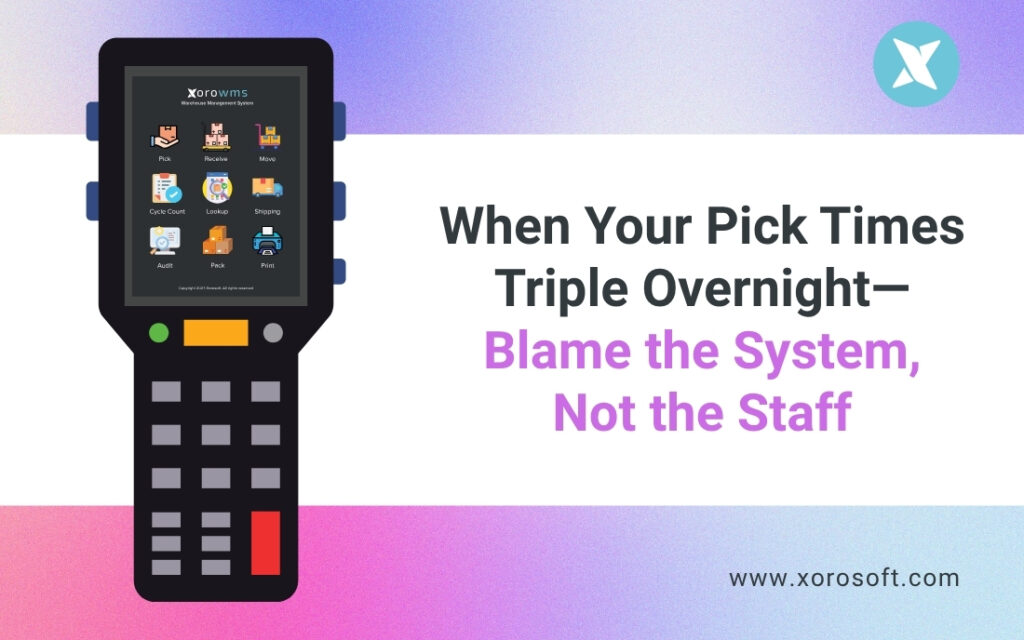
Warehouse Picking Inefficiency Isn’t a Personnel Issue
Warehouse picking inefficiency doesn’t just slow things down—it brings your entire operation to a crawl. One week your fulfillment team is moving like clockwork. The next, pick times triple, shipments go out late, and support tickets flood in. It feels sudden, yet the signs have been building for a while.
Nevertheless, your team is doing their best. They’re showing up early, staying late, and trying to make things work. So, if productivity is falling, what’s really going wrong?
In most cases, it’s not the people. It’s the system behind them—and that’s where the real fix begins.
The High Cost of Disconnected Systems
To begin with, warehouse picking inefficiency is one of the most frustrating and costly issues scaling businesses face. It creeps up slowly, but before you know it, you’re in crisis mode. Eventually, you hit a wall:
-
Orders backlogged
-
Inventory numbers off
-
Staff zig-zagging through aisles without a clear plan
-
Customer service drowning in “where’s my order?” emails
Clearly, these aren’t people problems. These are systemic failures caused by a patchwork of disconnected apps, spreadsheets, and outdated software.
For instance, your WMS might not sync with sales. Your fulfillment team might not know what’s in stock. Your accounting software might only update at day’s end. As a result, this creates a cascading slowdown that burns time and trust.
In other words, disconnected systems make it impossible to maintain smooth operations.
Why Warehouse Picking Inefficiency Keeps Happening
At the root of all this is a lack of real-time visibility.
When sales orders don’t auto-update your inventory…
If your ERP doesn’t integrate directly with shipping and fulfillment…
And when your team relies on manual steps to move data from one app to another…
That’s not software—that’s a digital mess.
And that mess leads to warehouse picking inefficiency on a massive scale. As a consequence:
-
Inventory becomes unreliable
-
Orders get misrouted or delayed
-
Fulfillment turns reactive, not strategic
-
You lose the ability to scale without adding headcount
Still, most businesses blame staff performance instead of their systems. However, the problem runs deeper.
That’s why, to fix fulfillment, you must start with your tech stack.
The Fix: A Unified ERP to Eliminate Picking Delays
The shift away from disconnected tools toward a unified ERP is what ends warehouse picking inefficiency. Instead of juggling apps, imagine running your operations from a single system where:
-
Inventory updates the moment an order is placed
-
Pick lists auto-generate and route efficiently
-
Purchases and restocks are automated
-
Fulfillment sees exactly what’s in stock, across every location
This isn’t just theory—it’s the foundation of modern warehouse performance. When you unify your operations with an ERP built for real-time execution, you remove the guesswork. You remove the manual tasks. Moreover, you remove the bottlenecks.
In short, warehouse picking inefficiency doesn’t stand a chance when the right system is in place.
Besides, once everything is centralized, teams collaborate better and make faster decisions.
How Xorosoft ERP Ends Warehouse Picking Inefficiency
Xorosoft was built from the ground up to fix the very problem we’re talking about.
- Cloud-native and ready to deploy fast
- Built-in WMS, not a bolt-on solution
- Real-time syncing across inventory, accounting, purchasing, and fulfillment
- Native integrations with Shopify, Amazon, EDI, and 3PLs
- Supports multi-location and multi-currency operations
- #1 in Ease of Use on G2’s ERP ranking
- Listed on the Shopify App Store
Rather than force your team to work around a bad system, Xorosoft gives them a better one. The result? Faster pick times, better visibility, and zero blame-game.
And since it includes hundreds of automation-ready APIs, it connects easily to the rest of your stack—removing manual work and duplication.
Consequently, your warehouse becomes a driver of growth, not a bottleneck.
What’s more, your staff finally gets the tools they need to perform at their best.









